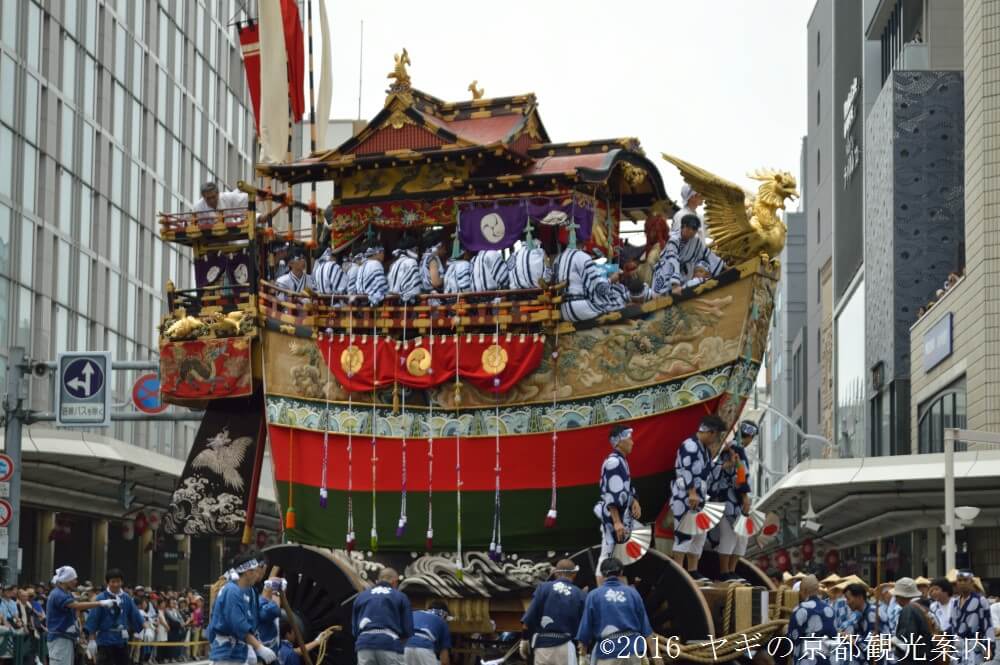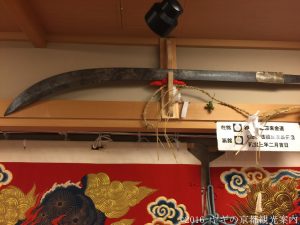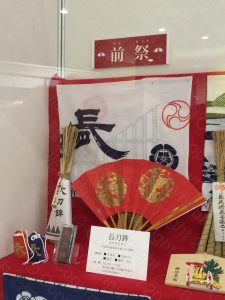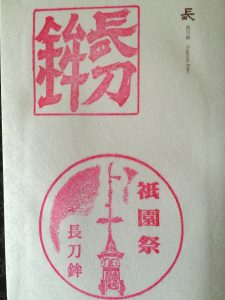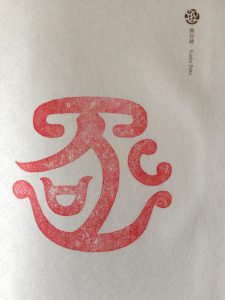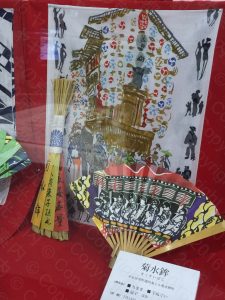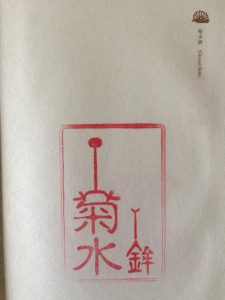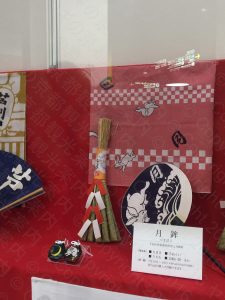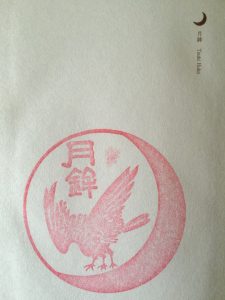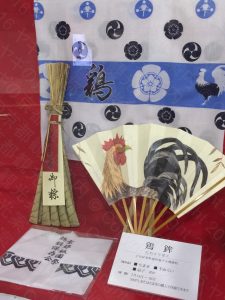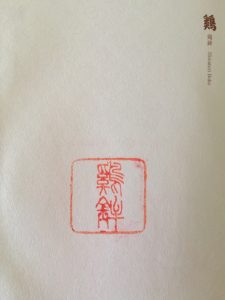THE GIST OF THIS ARTICLE
- This Page 概説、Overview, Nginata Hoko, Kanko Hoko, Kikusui Hoko, Tsuki Hoko, and Niwatori Hoko
- Page 2 Hoka Hoko, Iwato Yama, Fune Hoko, Yamabushi Yama, Moso Yama
- Page 3 Taishi Yama, Kakkyo Yama, Hosho Yama, Abura Tenjin Yama, and Shijo Kasahoko
- Page 4 Toro Yama, Hakuga Yama, Tokusa Yama, Arare Tenjin Yama, and Hakurakuten Yama
- Page 5 Ashikari Yama, Urade Yama, Ayagasa Hoko, and Hotei Yama
- Page 6 Kita Kannon Yama, Minami Kannon Yama, Hashi Benkei Yama, En no Gyojya Yama, and Koiyama
- Page 7 Hachiman Yama, Suzuka Yama, Kuronushi Yama, Jomyo Yama, Ohfune hoko, and Takayama
The following is the contents of this article.
Overview
In this article, you can learn all 34 Yamaboko/Yamahoko floats of Gion Matsuri festival with their “Tsujimawashi” videos and short tips.
The information of their Goshuin stamps and souvenirs are also available.
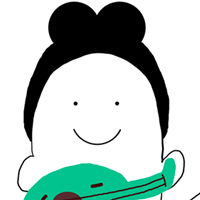
In 2023, Goshuin of Koiyama is not available.
How to tell the Yama from Hoko?
We have four kinds of floats; Hoko, Hikiyama, Kakiyama, and Yatai.
Hoko has a rod on a roof. Hikiyama has a pine tree and wheels. Kakiyama has a pine tree and with no wheels. Yatai has no wheels and pine tree (resembles Kakiyama) and Fune Hoko and Ohfune Hoko. Check out the link below.
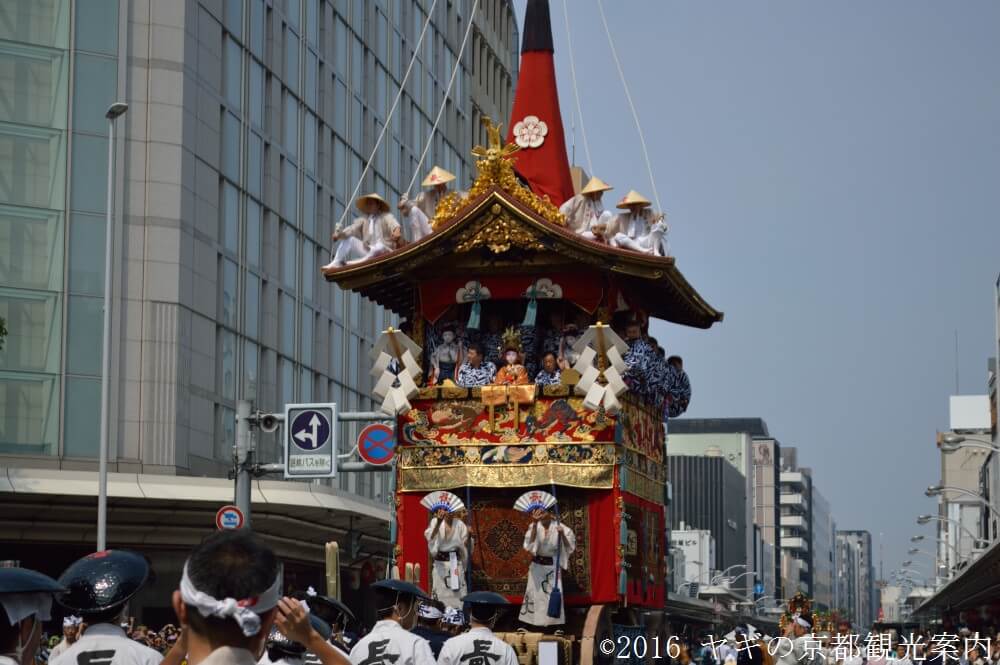
The order of Yamahoko parade 2025
Saki Matsuri 前祭巡行 7/17
| 順番 | くじ | 山鉾 |
| 1 | くじ取らず | 長刀鉾 Naginatahoko |
| 2 | 山壱番 | 占出山 Urade Yama |
| 3 | 山弐番 | 霰天神山 Arare Tenjin Yama |
| 4 | 山参番 | 山伏山 Yamabushi Yama |
| 5 | くじ取らず | 函谷鉾 Kanko Hoko |
| 6 | 山四番 | 油天神山 Abura Tenjin Yama |
| 7 | 傘壱番 | 綾傘鉾 Ayagasa Hoko |
| 8 | 山五番 | 蟷螂山 Toro Yama |
| 9 | 鉾壱番 | 菊水鉾 Kikusui Hoko |
| 10 | 山六番 | 保昌山 Hosho Yama |
| 11 | 山七番 | 伯牙山 Hakuga Yama |
| 12 | 山八番 | 白楽天山 Hakurakuten Yama |
| 13 | 鉾弐番 | 月鉾 Tsuki Hoko |
| 14 | 山九番 | 木賊山 Tokusa Yama |
| 15 | 傘弐番 | 四条傘鉾 Shijo Kasahoko |
| 16 | 山拾番 | 太子山 Taishi Yama |
| 17 | 鉾参番 | 鶏鉾 Niwatori Hoko |
| 18 | 山拾壱番 | 芦刈山 Ashikari Yama |
| 19 | 山拾弐番 | 郭巨山 Kakkyo Yama |
| 20 | 山拾参番 | 孟宗山 Moso Yama |
| 21 | くじ取らず | 放下鉾 Hohka Hoko |
| 22 | くじ取らず | 岩戸山 Iwato Yama |
| 23 | くじ取らず | 船鉾 Fune Hoko |
Ato Matsuri 後祭巡行 7/24
| 順番 | くじ | 山鉾 |
| 1 | くじ取らず | 橋弁慶山 Hasih Benkei Yama |
| 2 | くじ取らず | 南観音山 Minami Kannon Yama |
| 3 | 山一番 | 役行者山 En no Gyoja Yama |
| 4 | 山弐番 | 浄妙山 Jyomyo Yama |
| 5 | 山参番 | 鯉山 Koi Yama |
| 6 | くじ取らず | 北観音山 Kita Kannon Yama |
| 7 | 山四番 | 八幡山 Hachiman Yama |
| 8 | 山五番 | 黒主山 Kuronushi Yama |
| 9 | 山六番 | 鈴鹿山 Suzuka Yama |
| 10 | くじ取らず | 鷹山 Taka Yama |
| 11 | くじ取らず | 大船鉾 Ohfune Hoko |
Naginata Boko 長刀鉾
Naginata hoko is the most popular and famous Hoko in Gion Matsuri festival.
Naginata is a traditional Japanese sword invented in Heian period. Naginata hoko has long naginata on the roof and that is the reason why it is called “Naginata hoko. The Naginata is known for its power to take away evil spirits.
The order of Yamaboko float parade was decided on the lottery but Naginata hoko is always at the top of the parade because of its ability put away evil spirits.
Only Naginata hoko has “Ochigosan” boy on it.
He performs “Chigomai” dance during the parade.
Kanko Boko 函谷鉾
Lord Mengchang, a states person of Qin dynasty in acient China, and his collegue was on the run. They arrived at a gate in Kankokukan valley at night. The gate opened at dawn. One of them crowed as rooster and they escaped narrowly.
Kikusui Boko 菊水鉾
Kikusui Hoko was named after a well which bears the same name in the district.
Tsuki Boko 月鉾
Tsuki hoko (月鉾) is named after “Tsukuyomi no Mikoto (月読尊)”, a son of the Deity of Yasaka shrine.
Niwatori Boko 鶏鉾
Niwatori hoko is based on an old story: In ancient China, people used a drum at lawsuits. When peace ruled the country, roosters and hens lived in the drum because there were no conflicts.

